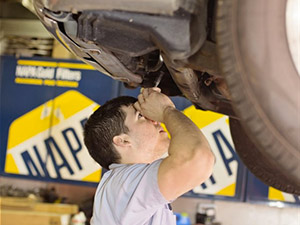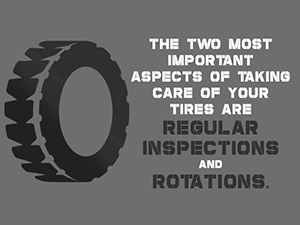Winter Tire Maintenance
Shedding Light On Common Tire Misconceptions
Genins Auto Care TiresWinter is tough on tires — all drivers know at least that much. But unfortunately, some people are so wary of being upsold by auto maintenance shops as part of the $58 billion auto repair industry that they convince themselves that their tires are doing just fine. Here’s what you really need to know:
The Penny Test Isn’t Enough
Many people think figuring out whether their tires need replacing is easy. Just use the penny test to check your tread depth, and as long as the top of Lincoln’s head is covered, you’re good, right? It’s actually not so simple. The penny test is based on the assumption that a 2/32 inch tread depth is adequate. That’s true, for the most part, when the roads are dry. But if you’re dealing with slush and snow, 6/32 of an inch is more appropriate. There are other factors at play too, such as cracking, dry rot, or signs of general wear that can warn you a tire blow-out could happen soon. If you’re not sure how to assess tires, you can ask a technician at your local car repair shop.
Tire Rotation Really Matters
For some reason, people think that it’s expensive to get their tires rotated. But most auto maintenance shops provide the service for around $20. And if you’ve purchased new car tires at a location, it’s likely you’ll get rotations free or at an even lower price there. Tire rotations are an extremely low-cost way to extend the life of your tires by evening out wear. Immediately after a rotation, you might even notice an improvement in your car’s handling and steering.
Snow Tires Make a Difference
If you drive quite a bit on ice and snow, then snow tires are probably a worthy investment. The reason is that snow tires are designed to channel slush and snow away from the part of the tire that actually contacts the road, allowing the contact patches to get a better grip on slippery surfaces. Yes, it will cost more to have snow tires and get them switched out every year, but that cost is much lower than those associated with a car accident. You’ll often find truck and car tires on sale during the winter, so it’s possible you can even get an excellent deal.
Are you keeping your car in good shape this winter? Keep in mind that with the windows up and heat blasting, you might not be listening to your car for squeaks, rattles, and bumps as carefully as you do in the summertime. Brake pads in particular can get ignored, so remember that they’ll last only between 30,000 and 70,000 miles (or until they’re worn to 1/8 of an inch), and that number is likely to be on the lower end if you do a lot of driving in tough conditions. And the more often you take your car to auto maintenance shops for check-ups, the less likely you are to be surprised by big problems down the road.

